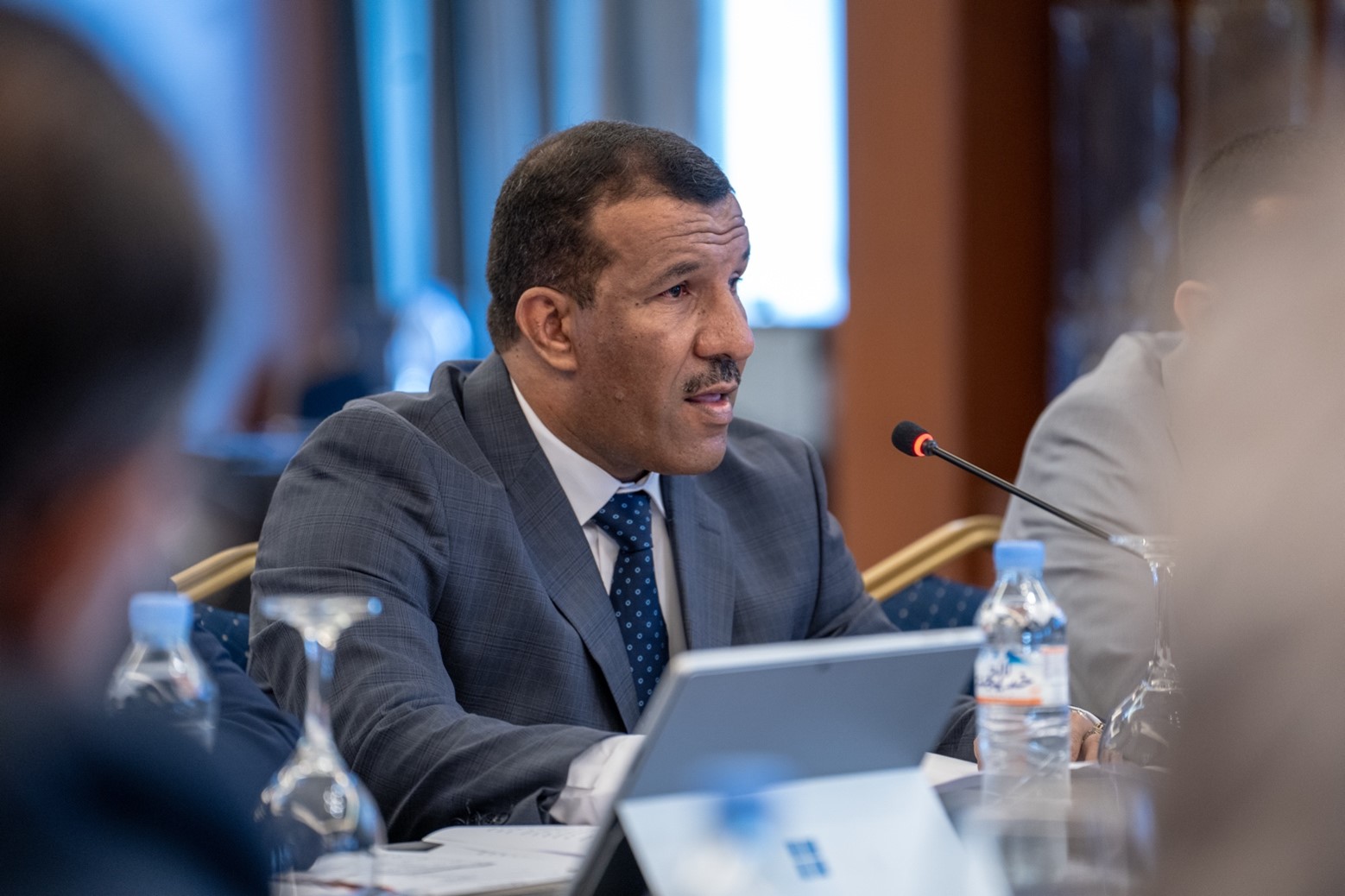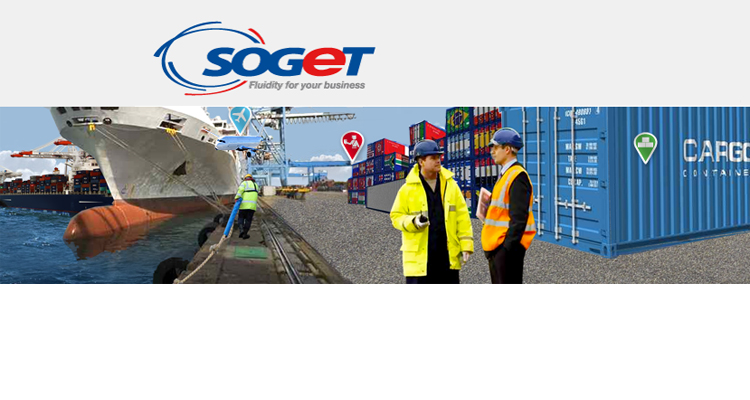The health product supply chain in Africa has always been a major challenge, leading to vaccine losses and shortages of essential medicines. But a wind of change is blowing across the continent with the launch of the Logistics Marketplace, an unprecedented digital platform that promises to revolutionize humanitarian and health logistics. To learn more about this initiative and its potential, Logis-T Africa’s managing editor, Carlos Kpodiefin, spoke with Lantos Pin, a health supply chain expert, who explains how this solution could transform access to healthcare for millions of people.
- The Logistics Marketplace is presented as a world first. What truly makes it unique compared to existing solutions in health and humanitarian supply chains?
What makes the Logistics Marketplace unique is that, for the first time, we have a central, openly accessible repository of logistics providers willing to operate (parts of) health and humanitarian supply chains. In the past, information on providers was collected piecemeal by individual organizations and rarely shared beyond their own networks. This meant buyers, such as governments, donors, and others, often had to “start from scratch” every time they were considering outsourcing logistics services. The marketplace replaces that fragmented, opaque system with one platform where buyers can easily discover providers per country and share their logistics tenders, and where providers can showcase their services and experience to the entire buyer ecosystem. Importantly, access comes at no cost to eligible organizations, with the Global Fund funding free access to the platform at least through December 2026. When registering your organization, use Access Code: WELCOME2025!.
2. What was the spark that led to the creation of this platform? Did you have a concrete case in mind that illustrates the urgency of such a solution?
The idea for the Logistics Marketplace emerged from recognized challenges that have persisted across health and humanitarian supply chains. Identifying capable providers often required significant time and effort, with many providers remaining invisible due to limited market transparency. During health emergencies, governments, donors and NGOs found it difficult to quickly engage new logistics providers, leading to reliance on a small pool of familiar providers. Existing procurement systems also tended to be slow and opaque, making them poorly suited to sourcing logistics services efficiently. Finally, donors lacked visibility into who was delivering specific logistics services across countries, which made it harder to promote competitive, transparent, and sustainable markets. The Logistics Marketplace was created to address these challenges by making providers visible, procurement easier, and logistics markets more transparent.
3. In your view, why have health and humanitarian systems taken so long to fill this logistics gap?
Historically, procurement of health products was prioritized over logistics. Donors and global health institutions were rightly focused on achieving immediate health impact and curbing epidemics, and less focused on building sustainable in-country health supply chains. Little investment went into open, market-based logistics solutions. Without visibility into available providers, and with procurement processes not accustomed to outsourcing logistics, the gap persisted for years. Today, there is a growing recognition of the need for sustainable supply chain solutions and resilience. This means governments must increasingly be equipped to autonomously run and oversee their health supply chains. The Logistics Marketplace directly contributes to that goal.
4. It is estimated that up to 50% of vaccines are lost due to inadequate logistics. How can the Logistics Marketplace concretely reduce this dramatic figure?
Vaccine losses occur at many points in the end-to-end supply chain – from international freight and storage to last-mile delivery and dispensing – and logistics is a crucial factor. The Logistics Marketplace contributes to reducing these risks by enabling buyers to quickly identify cold-chain specialists, compare providers based on experience and ratings, and run transparent logistics tenders. Contributing to increased logistics performance, lower shrinkage rates and more vaccines reaching communities intact.
5. Which regions, diseases, or health programs are you prioritizing first with this platform?
The Logistics Marketplace is openly accessible to any eligible buyer seeking logistics services in developing countries. One of the strengths of a SaaS solution is that it can be used wherever there is interest, without the need for local infrastructure. As part of our launch campaign, we are initially focused on Nigeria and Kenya, while also seeking to engage partner organizations and logistics associations to help drive broader adoption across other countries and regions. The platform is not tied to specific diseases or health programs: whether it’s HIV, TB, malaria, immunization, or any other health product, the Logistics Marketplace supports logistics integration by making services visible and accessible. Ultimately, it doesn’t matter what product is being stored or shipped – as long as the requirements are known, reliable logistics services can ensure it reaches those who need it.
6. How do you measure the success of the Marketplace? Is it in terms of time saved, reduced costs, improved medicine availability, or public health outcomes?
In the short term, our focus lies on driving adoption and attracting users. Longer-term success means improving logistics market transparency, enabling the uptake of outsourcing models, and driving operational efficiency. More concretely, we aim to reduce costs by removing the need for costly logistics market assessments, save time for buyers in sourcing logistics services faster and with less effort, and whether more diverse providers are participating in tenders so buyers receive more competitive and well-priced bids. Ultimately, we hope this platform contributes to increasing supply chain performance and improving health product (medicine) availability.
7. Can you explain, in simple terms, how the platform works for someone in the field (for example, a Ministry of Health or a small local transporter)?
The Logistics Marketplace connects two sides: buyers (such as governments, donors, and NGOs) who seek logistics services, and providers who offer them. A hybrid role – for organizations like 3PL or 4PL logistics providers that both seek and offer logistics services – will be added later this year.
- For a buyer such as the Ministry of Health, the process is simple: register and log in, search for logistics providers in your country, or post a logistics tender. The platform then guides you in publishing that tender, either as an open request visibility to all providers or through a formal RFP process where you invite specific providers to participate in the tender
- For a provider such as a local transporter: you register your company, create a profile showcasing your footprint, services and experience, and gain visibility to tenders published on the open marketplace. You can also be directly invited to participate in a formal RFP process
This way, both sides connect transparently in one place, instead of managing fragmented exchanges of documents and clarifications through phone calls, emails, and other channels.
8. How did you ensure the platform remains intuitive and accessible in contexts where digital infrastructure is sometimes limited?
The platform is cloud-based and optimized for desktop, tablet and mobile, giving users flexibility in where and when they access it. Registration takes only a few minutes, and workflows are streamlined so tasks can be completed with minimal clicks. For the platform’s current version, we deliberately avoided complex features, ensuring the platform remains intuitive and usable in low-bandwidth environments.
9. What mechanisms guarantee transparency, provider reliability, and the security of exchanged data?
Transparency is built in through open provider profiles, visible tenders, and a two-way rating system. Reliability is supported by requiring logistics providers to provide legal details such as business and tax IDs upon registration, along with the ability for buyers to view provider’s certifications, experience, and ratings from other users. Data security is ensured by Logixity’s SaaS infrastructure, with role-based access controls, and modern cybersecurity protections to safeguard information exchanged on the platform.
10. SaaS is often perceived as commercial and costly. How did you adapt this technology to a “global good” model that is openly accessible and free of charge?
The Logistics Marketplace is powered by a commercial SaaS platform (Logixity), but thanks to the Global Fund support, free access is guaranteed at least through December 2026. This allows the platform to operate as a global good: governments, providers, and other eligible organizations don’t pay license fees. By combining commercial technology with a global good mandate, the Logistics Marketplace delivers the scalability and reliability of SaaS while remaining openly accessible to those who need it.
11. How are local logistics providers reacting: do they see the platform as a growth opportunity, or do they fear increased competition?
The Logistics Marketplace has only just launched, but early reactions from providers are positive. Many see it as a much-needed opportunity for business development, since they have often struggled with visibility; relying on personal networks to even hear about logistics tenders. These providers may have the capacity but were effectively invisible to buyers in health and humanitarian supply chains. The Marketplace levels the playing field by allowing providers of all sizes to showcase their services, gain visibility to open tenders, and compete more fairly with incumbents.
12. Will the Marketplace evolve beyond health and humanitarian supply chains into other sectors?
The Logistics Marketplace is first and foremost a global good dedicated to strengthening health and humanitarian supply chains, where the need is highest. At the same time, the underlying platform, Logixity, recognizes that such a platform could also bring value in sectors such as agriculture, natural resources, and FMCG. They are exploring how best to expand access later this year or early next year.
13. What additional developments or features do you envision in the medium term (AI, shortage prediction, real-time tracking, blockchain, etc.)?
The Logistics Marketplace is designed as a marketplace: a connector where buyers and providers can more easily find, assess, and engage with each other. It is not intended to execute logistics services or provide features such as real-time tracking. We will be working with initial users to identify which features would bring the most value, and their feedback will guide the platform’s technical development roadmap. Looking ahead, there are opportunities to embed AI to reduce the time, cost and complexity of logistics sourcing, along with other automations to simplify processes for both buyers and providers.
14. If we project 5 years ahead, what do you think the impact of the Logistics Marketplace will be on global health supply chains?
In five years, we hope the Logistics Marketplace will be a critical piece of infrastructure for health, humanitarian, and pharmaceutical logistics in developing countries. Much like pooled procurement mechanisms for medicines today. By then, governments will be able to independently run transparent, competitive outsourcing processes without relying on external support, allowing them to focus their resources on what is core to their health strategies – whether that means operating parts of the supply chain themselves or purchasing logistics services executed by the private sector under government oversight. Providers will compete on performance rather than relationships, and supply chains will become faster, more transparent, and more resilient. Ultimately, that means fewer delays, fewer product losses, and more people receiving the medicines and vaccines they need.
Interview by Carlos Kpodiefin






